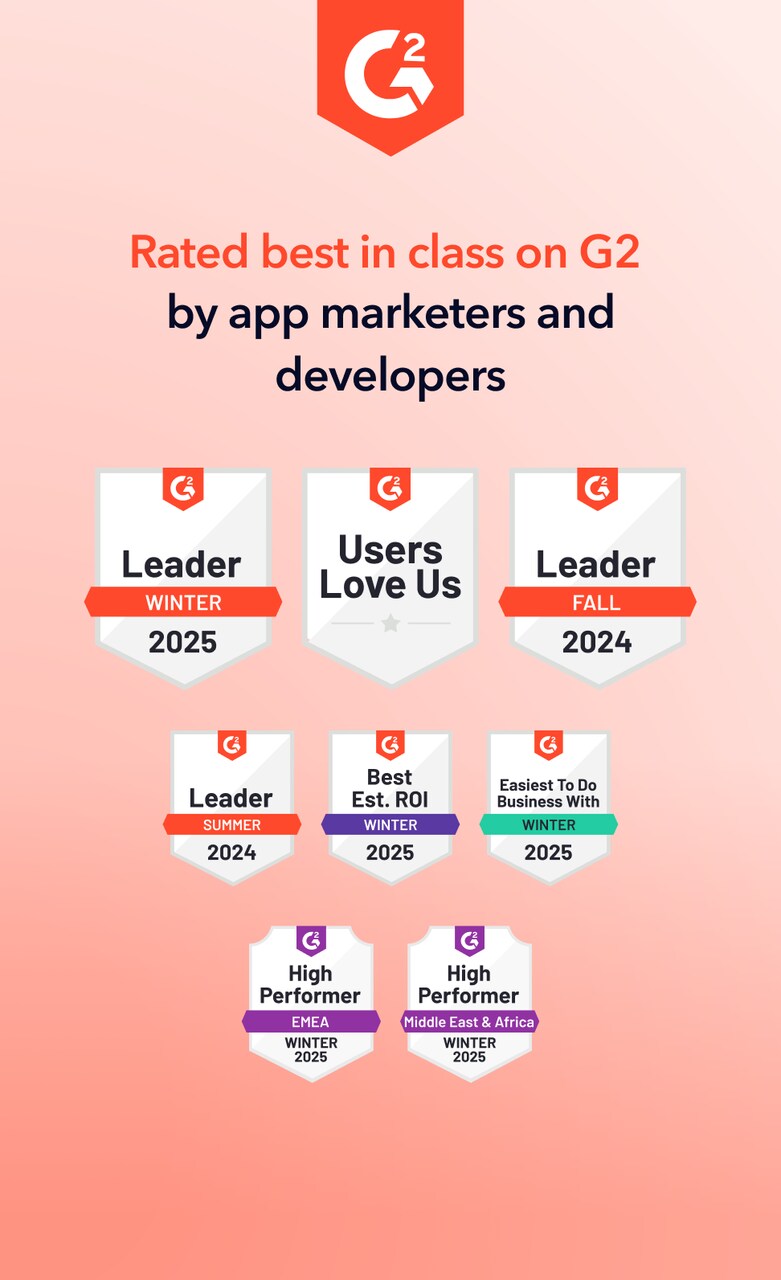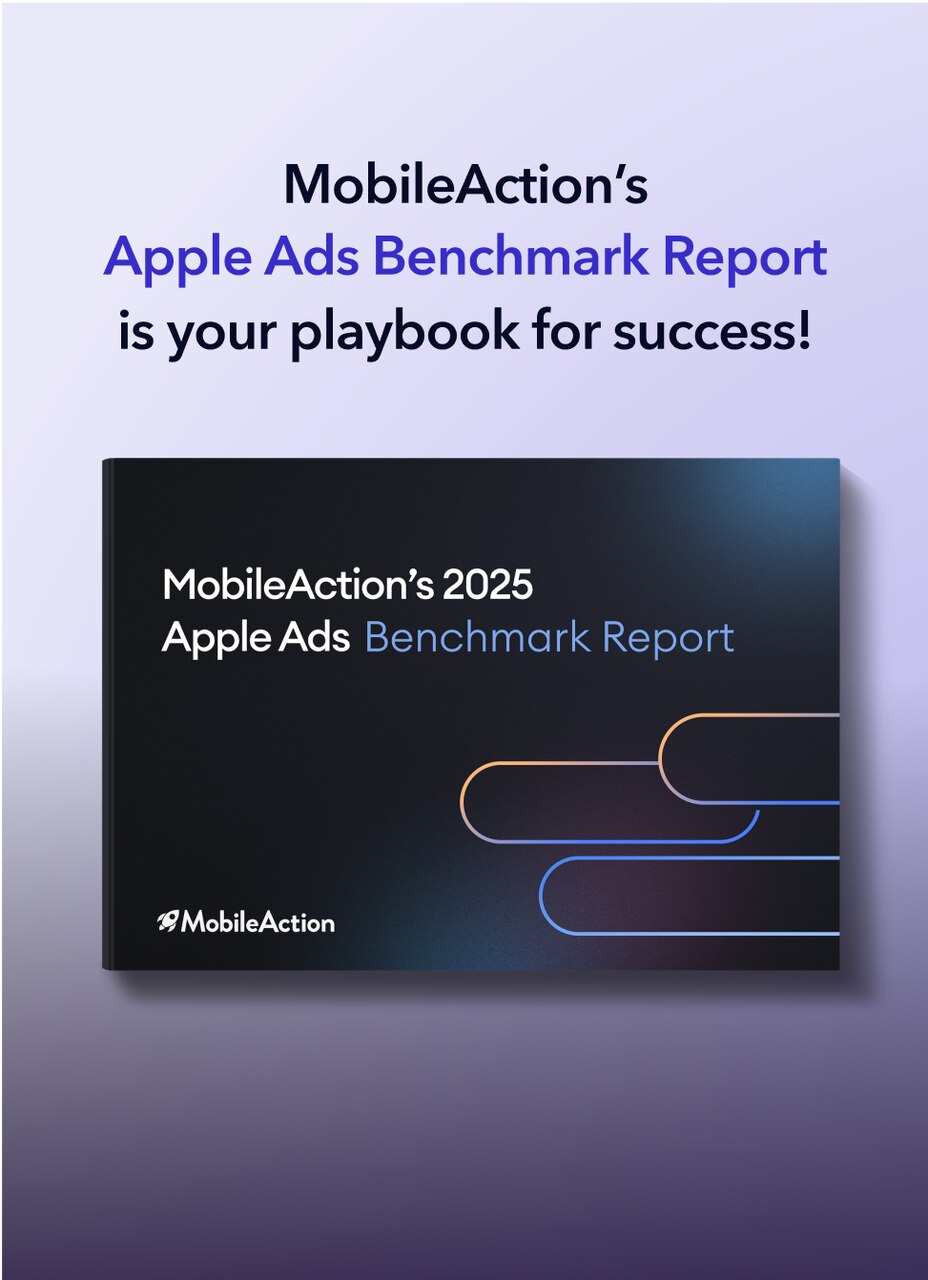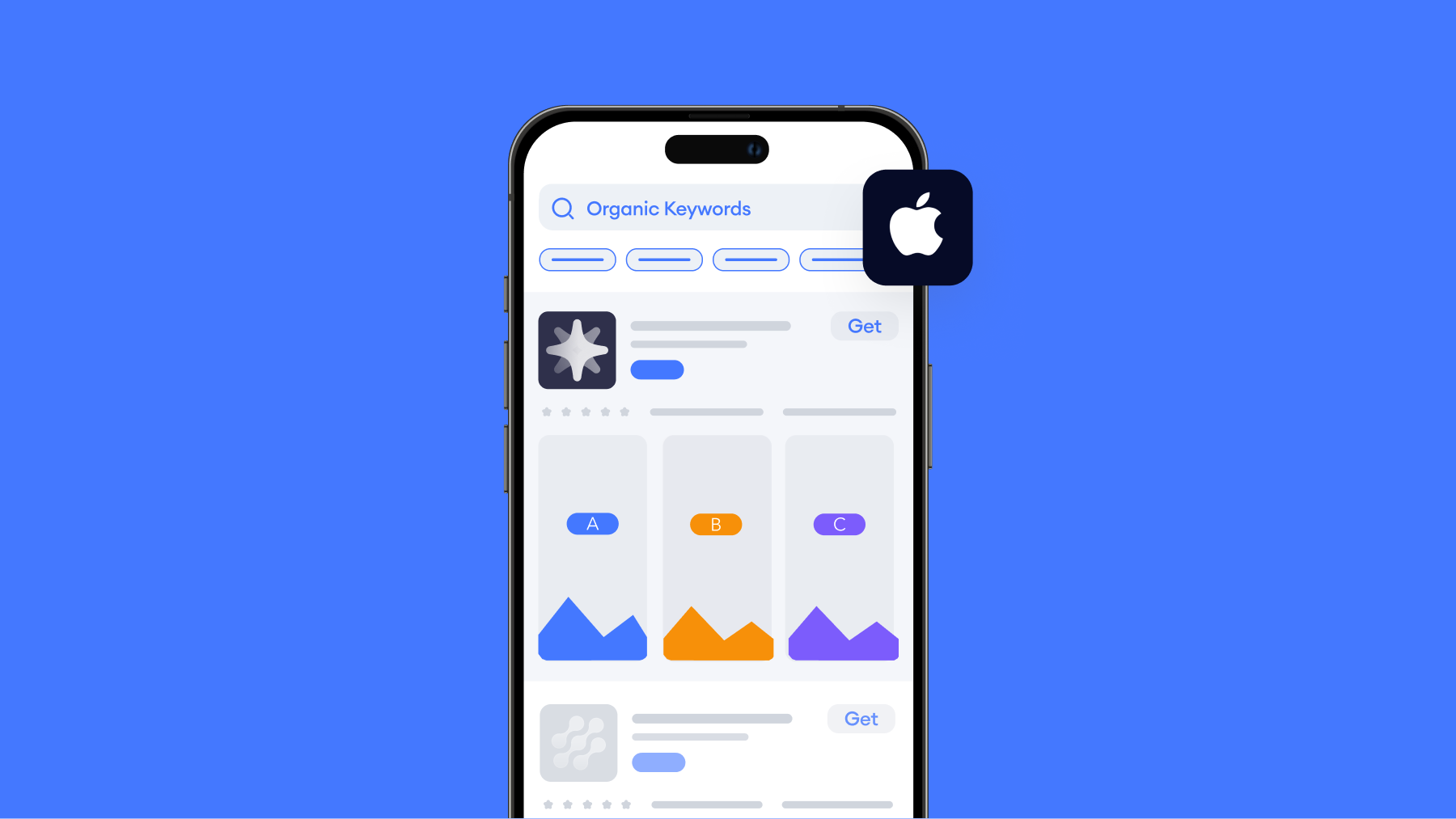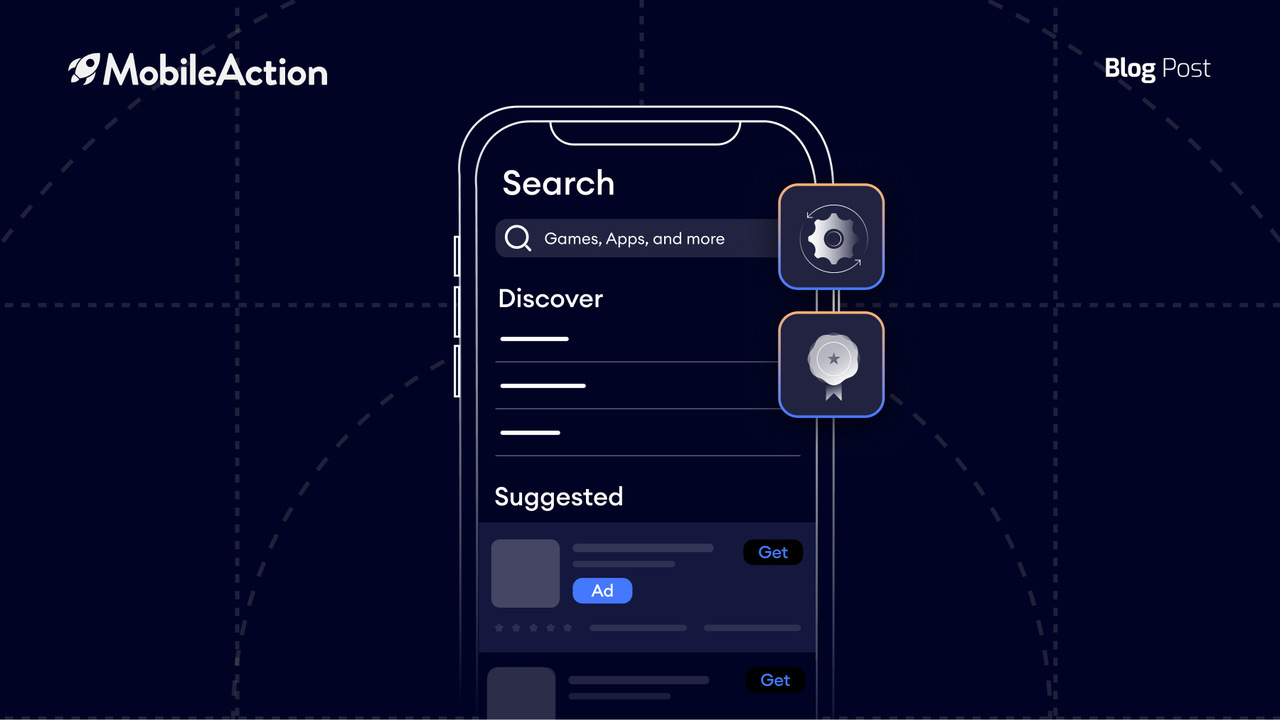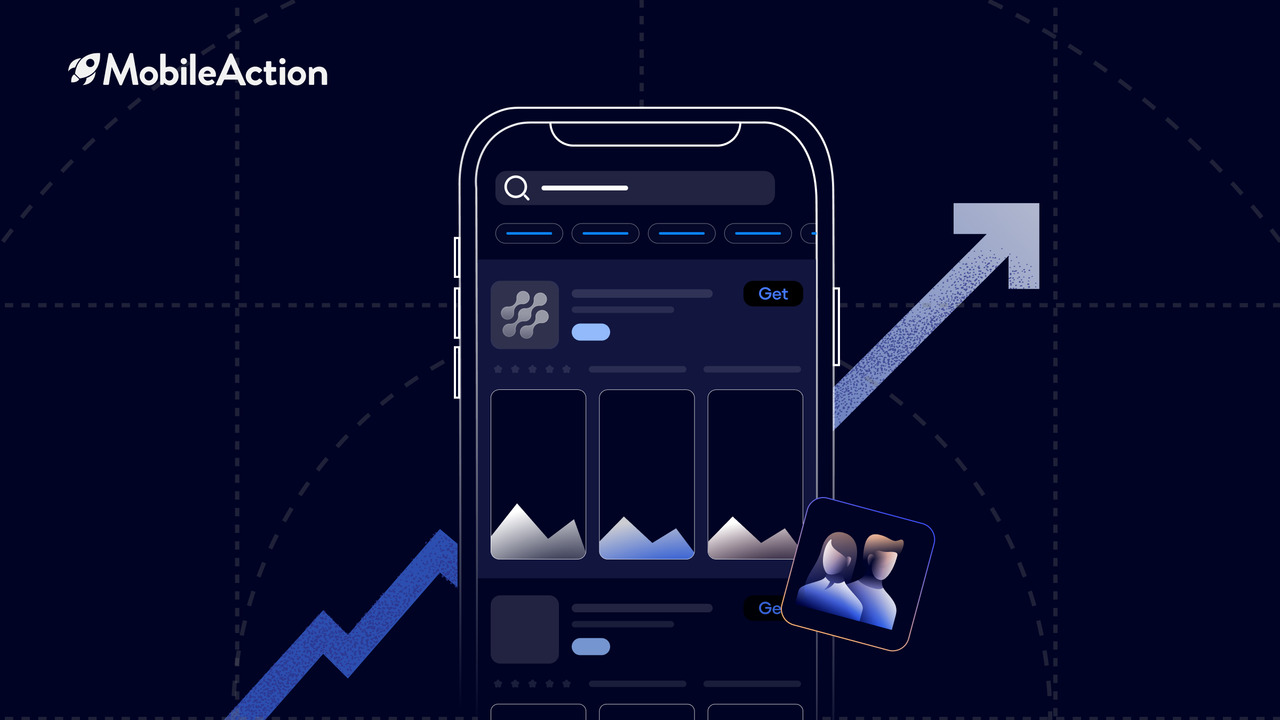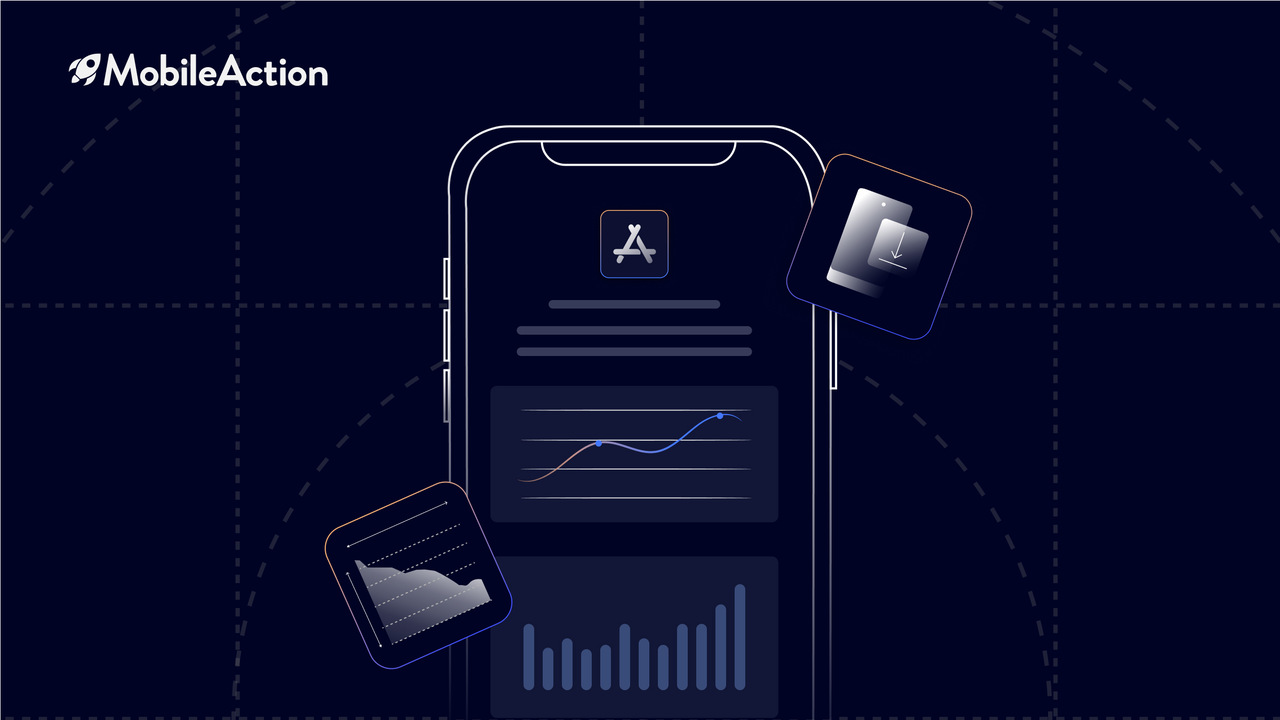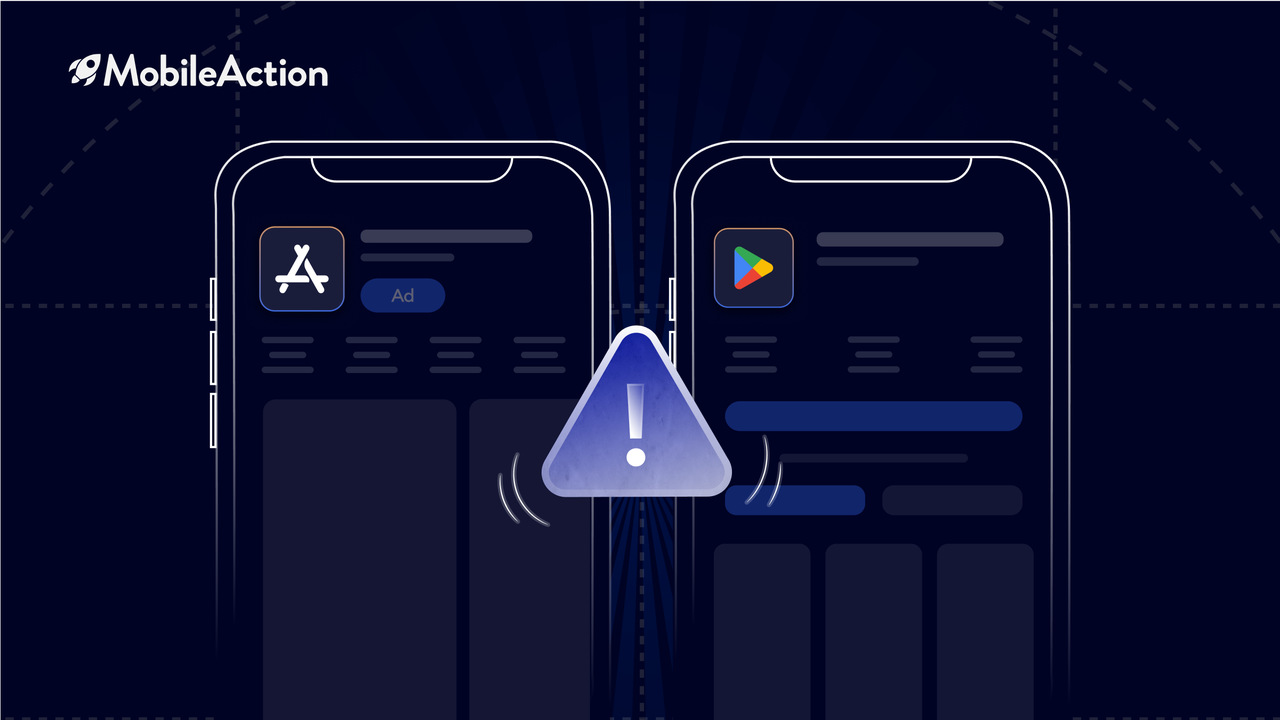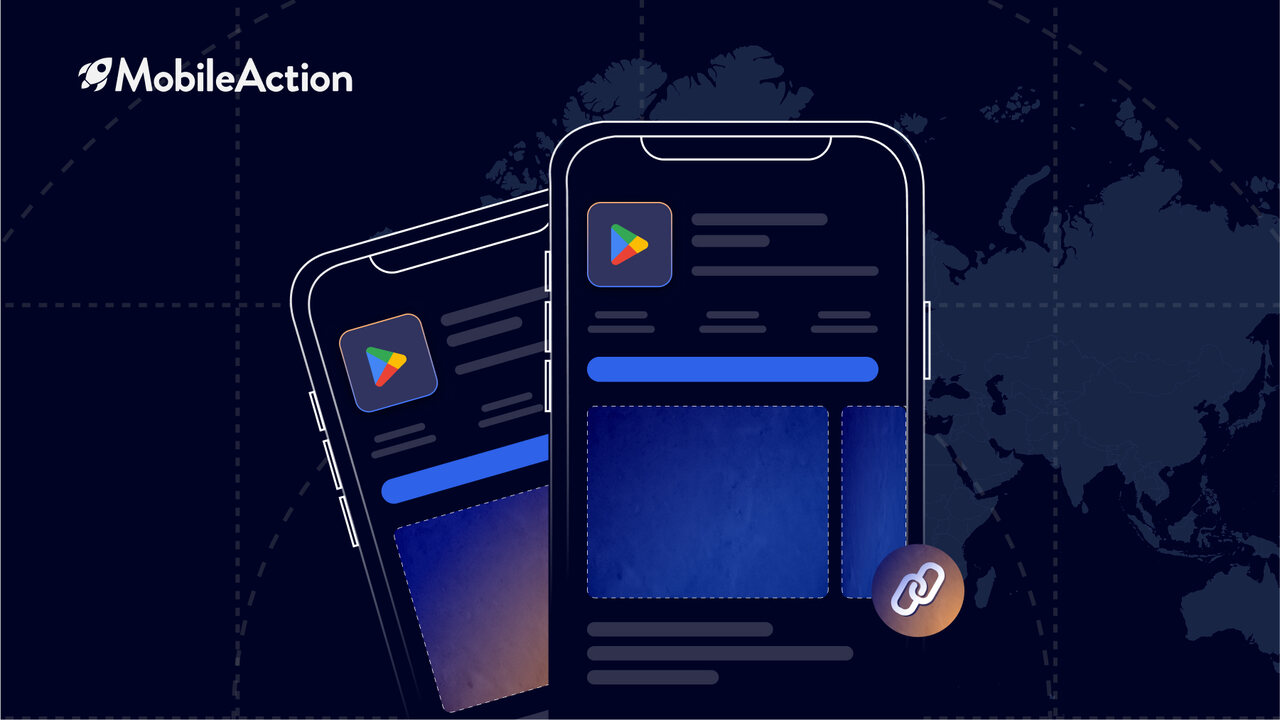Looking to boost your app's visibility and acquire more users? Our 2025 ASO Report is your ultimate guide to navigating the evolving app store landscape. Packed with data-driven insights, keyword trends, and top-ranking app strategies, this report will equip you with the knowledge to optimize your app's presence and achieve organic growth.
Key takeaways
- The marketplace demands a comprehensive mobile application marketing plan due to fierce competition across app stores, with millions of apps competing for user attention and elevated user expectations for personalized experiences.
- Market research forms the foundation of success, requiring thorough analysis of target audience demographics, competitor strategies, and current market trends to identify opportunities and optimize positioning.
- User engagement relies heavily on personalization, from customized onboarding experiences to targeted push notifications, in-app messaging, and email campaigns that respond to individual user behaviors and preferences.
- Performance tracking must focus on key metrics, including User Acquisition Cost (UAC), conversion rates, Customer Lifetime Value (CLV), and retention rates, to guide strategic decisions and budget allocation.
- Continuous optimization through data analysis, A/B testing, and agile response to market changes is essential.
Mobile applications are at the heart of most industries in forms that change how businesses connect with their audiences.
Be it via retail, health, entertainment, or productivity apps, millions of users seek solutions at their fingertips.
However, with millions of mobile apps across the Apple App Store and Google Play, competition is fierce, and the stakes are high.
For 2025, app marketers look toward arguably the most unprecedented challenge and opportunity in the field to date.
A dynamic, detailed app marketing plan is no longer a nice-to-have; instead, it is a necessity for survival and success.
Pro Tip: Check out MobileAction’s mobile marketing glossary for all marketing-related terms to have a better understanding of the topic!
What is mobile application marketing?
 Mobile application marketing involves a strategic approach to increasing visibility, acquiring and retaining users, and keeping them more engaged for extended periods.
Mobile application marketing involves a strategic approach to increasing visibility, acquiring and retaining users, and keeping them more engaged for extended periods.
Unlike traditional marketing, app marketing has to be unique to reach and strike a chord with mobile-first users and compete within the unique environments of app stores.
Core activities cover ASO, targeted ad campaigns, and approaches toward user engagement aimed at encouraging customer loyalty and improving retention rates.
Although the objectives of mobile application marketing could be different, they often refer to user acquisition, continued user engagement, and improvement in user experience.
A comprehensive plan for marketing the application helps organize these objectives into a concrete, actionable mobile app marketing strategy that can be measured, analyzed, and optimized over time.
So, if you want to step up your marketing plan for 2025, schedule a demo now and get unlimited access to AI-powered organic mobile app growth tools!
Why a mobile application marketing plan is essential in 2025
With millions competing for users’ attention, a well-thought-out application marketing plan is becoming essential for better visibility and engagement.
Here is why mobile app marketing will become indispensable in 2025:
- Raised User Expectations: Modern users demand seamless, intuitive, personalized experiences that engage them and add value to their day-to-day lives.
- Intensifying Competition: The marketplace is thick with apps, and it demands that apps make data-driven strides and implement actionably differentiated strategies to outpace the competition.
- Increased Data Analytics: Advanced data tools make gaining insight into user behavior easier, thus enabling marketers to hone their approach.
- Algorithmic Store Changes: App store algorithms are updated constantly; therefore, your knowledge of the ASO methodology is crucial for appearing in searches.
Steps to forge a marketing plan for your mobile app

Elaborating on an effective app marketing plan is a building process.
As described below, some steps guide one through the process from conceptualizing an application to successfully executing it.
Step 1: Extensive market research and competitor analysis
Perform profound research on the target audience and competitors.
An analysis of demographics, preferences, and digital habits will be connected with your ideal user base.
Meanwhile, competitor analysis will allow you to see gaps in the market and analyze specific effective strategies for similar applications.
- Target Audience Analysis: Examine potential users’ demographics, preferences, and behaviors.
- Market Trends: Consider the current industry trends and identify which appeal most to active users.
- Competitor Benchmarking: This strategy involves studying the category front runners and mapping strengths and weaknesses.
Step 2: Setting ambitious goals using the SMART methodology
Setting SMART goals ensures that your objectives are specific, measurable, achievable, relevant, and time-bound.
Examples of SMART goals include:
- Optimizing acquisition channels and engagement strategies can improve the number of Monthly Active Users by 20% in six months.
- Provide features and communication that keep customers engaged regularly to increase the retention rate by 10% by year-end.
With clear goals in place, you will be able to see progress, change strategies as needed, and measure success throughout your application marketing plan.
Step 3: Select the optimal marketing channels
Correctly finding the mix of marketing channels is fundamental. Consider these:
- Paid Social Media Ads: These ads target audiences on Instagram, Facebook, and TikTok with much higher accuracy by pinpointing people by interests and demographics.
- Influencer Partnerships: These involve influencer collaborations, which gives more credibility and assurance to powerful downloads from a highly engaged audience.
- Organic and Paid ASO: Continuous optimization of store presence regularly. The paid campaigns are highly effective/strong, especially for targeting very competitive keywords.
Picking the proper channels allows you to reach your target audience more easily and less waste on platforms without as much fruit.
Step 4: Elaborate on the strategy for dynamic content
This involves an effective content strategy to support app visibility and user engagement.
Consider the following types of content that will work for your app:
- Educational content provides tutorials, guides, and infographics that describe how advanced features of an app work and why it benefits him.
- User-generated content includes reviews, testimonials, and even social media posts. By encouraging users to share experiences, user-generated content hopes to increase trust and credibility.
- Video marketing helps you highlight features and benefits that attract users’ attention on YouTube or Instagram with the help of engaging videos.
You can achieve all this by renewing and diversifying the content strategy on a routine basis.
In return, you engage your audience while improving the reach of the mobile application marketing plan.
Step 5: Determine the budget and the key metrics to keep track
Spend carefully, allocating funds to those channels and tactics most likely to yield the best return. Metrics to track include:
- User Acquisition Cost (UAC): Refers to the cost required to gain one user.
- Conversion Rate: This is envisioned by the number of users who take the desired action, such as signing up or purchasing.
- Customer Lifetime Value (CLV): The revenue you can predict from a user over the app’s lifetime.
These metrics indicate the efficiency of your application marketing plan and will enable you to make data-driven changes.
Wondering what are the other metrics to keep an eye on? Check out our blog post titled Best app engagement metrics to boost your app in 2025!
Step 6: Implement user onboarding strategies
Onboarding represents a crucial moment in app retention, and effective onboarding strategies get users involved with the app and keep them coming back for more.
- Guided tutorials of the application to highlight the primary phases, including features and benefits.
- Onboarding personalization involves using real user information, such as demographic data or usage preferences, to personalize the onboarding experience.
- Provide rewards or incentives upon completion of onboarding and encourage users to explore more features.
A positive onboarding experience reduces churn and increases overall retention rates, helping you reinforce your app marketing strategy.
Step 7: Engage users with personalized marketing campaigns
Employ personal marketing to develop better relationships with users. Based on user behavior and preference, personalized messages will increase engagement and retention rates.
- Push notifications: Send notifications relevant to end users’ activities.
- In-app messaging: You reach them directly with what they have to say when they are active on the app to promote features or collect feedback.
- Email campaigns: Email is an excellent channel for re-engaging inactive users, promoting new features, or offering special incentives.
Personalized campaigns are more effective in driving user engagement than generic messages, making them an essential part of winning mobile app marketing techniques.
Step 8: Leverage data for continuous optimization
Finally, your application marketing plan should be dynamic and adjusted according to the data and insight regarding the apps’ performance. Use analytics for the following:
- Identify drop-off points: Find where users leave and optimize that area to improve retention.
- Optimize ad spend: Refine your advertising budget to focus it on which channels and ads perform the best.
- Testing and experimentation: Conduct A/B testing of various strategies and messaging to see what resonates best with the users.
This will keep you continuously at work, refining your strategy through data use so that your app marketing remains relevant and effective.
Final thoughts
The key to an effective app marketing plan in 2025 is much more than keeping up with trends.
It requires deep insight into your audience, a willingness to experiment, and dedication to continuous improvement.
Marketers must constantly adapt, using real-time data to inform decisions and optimize their campaigns for better engagement and ROI.
Staying agile and considerate at every user touchpoint will create a resilient marketing strategy against competition.
This way, your marketing strategy will grow your app user base and ensure their continued and engaged use long after the download.
In this way, you will thoughtfully and adaptively position your app to thrive in the competitive landscape of 2025 and beyond!
Looking to boost your app's visibility and acquire more users? Our 2025 ASO Report is your ultimate guide to navigating the evolving app store landscape. Packed with data-driven insights, keyword trends, and top-ranking app strategies, this report will equip you with the knowledge to optimize your app's presence and achieve organic growth.















